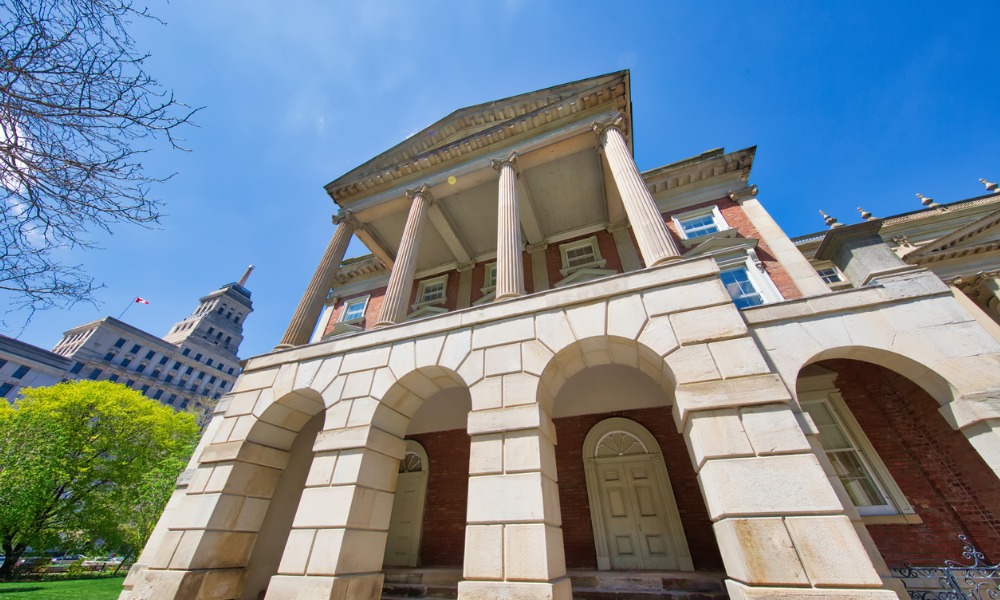
The company failed to properly trace the money: court

The Ontario Court of Appeal has dismissed a corporation's bid to recover the funds that were allegedly stolen by its employee.
In Sase Aggregate Ltd. v. Langdon, 2023 ONCA 554, Sase owns and operates a gravel pit in Uxbridge, Ontario. In 2021, it discovered that its pit manager, Jamie Showers, had defrauded the company more than $2.1 million.
Sase's investigation disclosed that between May 2016 and November 2020, Showers had issued false Sase invoices to two customers and had deposited the payments into two bank accounts at the Bank of Nova Scotia. The bank accounts were in the names of two companies incorporated by Showers. Sase further alleged that it also uncovered several other improperly diverting payments into the two corporate accounts.
Sase brought an application seeking to recover its stolen funds against Showers' wife, Michelle Langdon. Sase alleged that Langdon used the funds that her husband stole from Sase to purchase and renovate a property in Wagg Rd. The property was purchased in Langdon's name in 2019 for $800,000 and was sold in 2021 for net proceeds of over $2.3 million.
Sase sought a constructive trust over the net proceeds from the sale of the property on the basis that its funds could be traced to the purchase and improvement of the property. Case alleged that Langdon was liable based on knowing receipt, knowing assistance and unjust enrichment.
Langdon contended that the acquisition and improvement of the Wagg Rd. the property was partly funded by the proceeds of the sale of an investment property she owned in Oshawa, Ontario.
The application found that the evidentiary record did not show that Langdon received funds over $2.1 million in breach of trust, as Sase claimed. Instead, the evidence showed, at most, that she had unknowingly received approximately $177,000. The judge further found that Langdon had no actual knowledge of her husband's alleged activities and no knowledge of any facts sufficient that would ground a finding of constructive knowledge.
Case appealed the application judge's decision to the Ontario Court of Appeal, arguing that the judge made several errors in not imposing a constructive trust over all the net sale proceeds. The appeal court found that Showers defrauded Sase, and the movement of money has several indicators consistent with money laundering. However, the appeal court ultimately ruled that the application judge did not commit an error of law or any palpable and overriding error of fact.
Sase argued that the application judge ought to have imposed a constructive trust once it proved that Showers had deposited cheques payable to Sase exceeding $2.1 million into the corporate bank accounts and then transferred the funds into a joint account. In effect, Sase argued that it was enough to show that Sase's funds went into an account jointly owned by Langdon and Showers.
The appeal court pointed out that while a fraud occurred, Sase chose not to bring legal action against the fraudster, Showers. Instead, Sase sued his wife, a stranger to the fraud. The court said Sase sought a return of its money through a proprietary remedy, but it had failed to show that it was used to buy and improve the property. Furthermore, the court said that while Sase argued that it was enough to show that Sase's funds went into the joint account of Langdon and Showers, Sase did not seek constructive trust over the account because no money remained in the account. The court held that under these circumstances, the application judge made no error in refusing to impose a constructive trust over the Wagg Rd. property proceeds to avoid offending the principle of good conscience.
Sase also argued that the application judge made an error by finding that Sase had not properly traced the funds in and out of the joint accounts. Sase contended that where fraudulently obtained proceeds were deposited into a bank account and then mixed with the perpetrator's funds, liability in tracing is strict, and there is no need to show that they are the same funds.
However, the appeal court pointed out that the problem with Sase is that it is now seeking a constructive trust over the bank accounts, but rather over the sale proceeds of the Wagg. Rd. property. The court said that while Sase could have tried to trace its funds into the joint accounts and then out again, its tracing stopped at the accounts, which were emptied by the time Sase obtained a Norwich order to freeze the accounts.
Furthermore, the court found that Sase's tracing was incomplete. Sase provided a chart setting out the cheques and drafts used to pay for the purchase and renovation of the Wagg Rd. property, but Sase did not trace its funds into those payments.
In contrast, the court found that Langdon provided detailed evidence, showing the source of payments she had arranged and step-by-step how the transfer of funds occurred. As a result, the court said that she identified non-Sase sources or payments funded from independent sources that she arranged and were not connected with the funds allegedly stolen by Showers.
Accordingly, the court found no error in the application judge's decision. The court ultimately dismissed Sase's appeal.